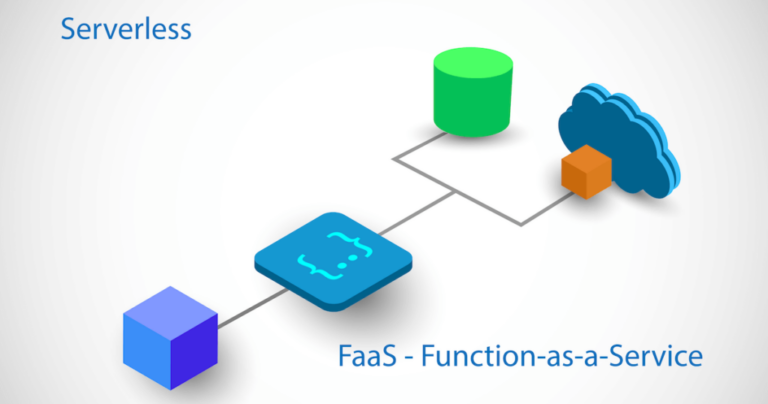When deciding how to proceed with cloud adoption, enterprises often debate the best cloud development approach. But they found themselves stuck around budding buzzwords of cloud computing. Cloud is still an evolving industry where innovation is happening at a rapid pace that invites innovative terminology. Cloud-native and cloud-agnostic are among the two popular buzzwords creating confusion around the usage of cloud computing and its advantages.
But you shouldn’t be confused between cloud-native architecture and cloud-agnostic architecture. The two are quite different and provide different benefits depending on the intended application(s). Let’s understand the terms in-depth and then see the differences shared to understand the best use-cases for each cloud adoption approach.
What Is Cloud Native?
Cloud-native refers to building and running applications to take advantage of the distributed computing offered by the cloud delivery model. Cloud-native technologies allow organizations to build public, private, and hybrid cloud applications. Applications developed using cloud-native technologies exploit the cloud’s scalability, elasticity, resiliency, and flexibility. The practice comprises microservices, containers, service meshes, immutable infrastructure, and declarative application programming interfaces (APIs).
Why Choose Cloud Native Architecture?
Going cloud-native allows you to make full use of the cloud environment of a CSP. You can leverage all cloud-native services and functions within the app’s architecture and unify development, testing, and deployment environments, allowing for CI/CD pipelines. Check these awesome benefits that cloud-native architecture provides for application development.
(Not sure whether your cloud architecture is providing you the real benefits or not? Check here the essential components of cloud native application architecture and how to leverage it for your business benefit.)
1) Agility in Architecture
Cloud-native architecture is tightly integrated with native services. It doesn’t depend on any third-party services, resulting in more flexibility in integration with other services in the most cost-efficient ways.
2) Lightweight Services
The service combinations in the cloud-native approach are quite CSP friendly. This makes it lightweight and convenient to configure cloud-native architectures with a similar pattern of setup mechanisms, even when using template solutions such as ARM (Azure Resource Manager) or CloudFormation.
3) Native Service Integration
Native services can more easily communicate with each other depending on the maturity of the CSP, making them easier to integrate as there are no third-party service dependencies, license requirements, or in-built native security to adhere to, depending on the configuration.
4) Vendor Lock-in
When an enterprise chooses a cloud-native architecture, they step into vendor lock-in. Therefore, the company’s roadmap for cloud adoption should not deviate from multi-cloud or plan to move to another CSP later, or the enterprise could risk significant setbacks.
What Is Cloud Agnostic?
Cloud agnostic refers to tools, platforms, or applications compatible with any cloud infrastructure. Cloud agnostic apps and workloads can move to and from any cloud environment without causing operational issues. Being cloud-agnostic means the flexibility that improves cost efficiencies even more than simply using the public cloud.
For a large corporation with high workloads, even incremental differences in cost can add up to significant sums of capital. For a digitally-enabled organization, these incremental gains in performance and insurance against technical problems on the provider-side are as much of an incentive to becoming cloud agnostic as cost efficiencies.
Why Choose Cloud Agnostic Architecture?
As defined in the above paragraph, the cloud-agnostic approach allows the usage of open-source tools, frameworks, and platforms. For example, monitoring cloud instances and resources could easily be done with the open-source Grafana dashboard with Prometheus. Many other key factors influence an organization’s decision to select cloud-agnostic architecture, includes:
1) Agnostic Architecture
If an enterprise is moving to a cloud-agnostic approach, it is often to reap the benefits of quickly migrating from one cloud to another. As mentioned above, if Grafana and Prometheus are used to implement monitoring services, it is relatively easy to transit from one cloud to another, such as from GCP to AWS, while using the same workload provisioning script with or without minor changes.
2) Multi-cloud
Every vendor strives to save effort and cost of rework activities. It could be achieved by a uniform pattern of services and modular choices across multi-cloud application deployments. Going cloud-agnostic simplifies the processes since it offers flexibility to reuse already available solutions designed and implemented in multi-cloud environments. One of the best examples could be using Terraform templates for server provisioning.
3) Open Source Integration
Unlike the cloud-native approach, a cloud-agnostic solution allows you to comprise both open source and proprietary tools. It offers you the opportunity to customize the service the way you want and utilize community support. These are important considerations since organizations wish to evolve and innovate with speed and scale.
4) Cost Efficiency
The possibility of open source integration and multiple service choices makes cloud-agnostic relatively less expensive. Though the approach requires the onboarding of technically sound engineers with sound knowledge of tools, frameworks, and terminologies, the approach serves its purpose by delivering several incremental benefits.
Cloud Agnostic Vs. Cloud Native: Which Approach Is Right For You?
To conclude, comparing cloud-agnostic vs. cloud-native doesn’t always require choosing one over the other. Companies need to decide for themselves whether cloud-agnosticism will work for them. If you are primarily interested in flexibility, unique features and freedom, and low cost, you should look at cloud-agnostic strategies. You can prefer the Cloud Native approach if you are looking for a quick solution that doesn’t require much development.
Before deciding between the two, organizations should plan a roadmap for cloud adoption and understand their long-term goal for this. From the above, it is clear that companies can achieve success in a joint environment because they balance each other’s limitations.




